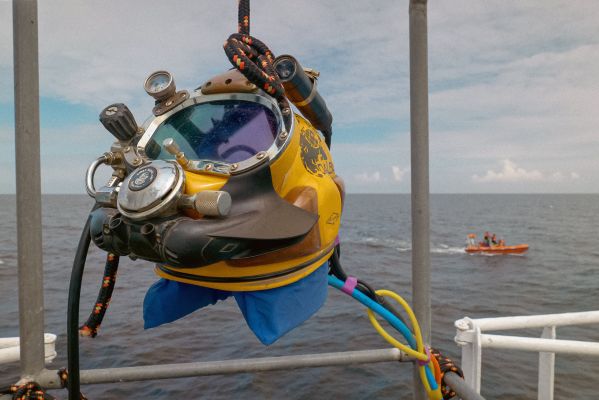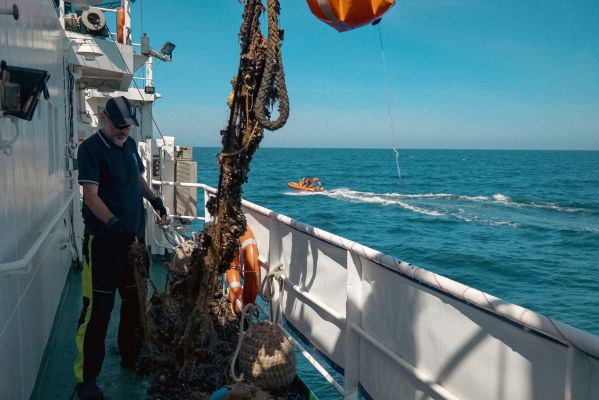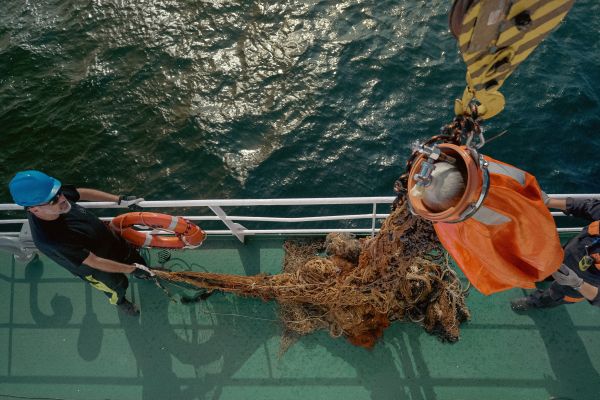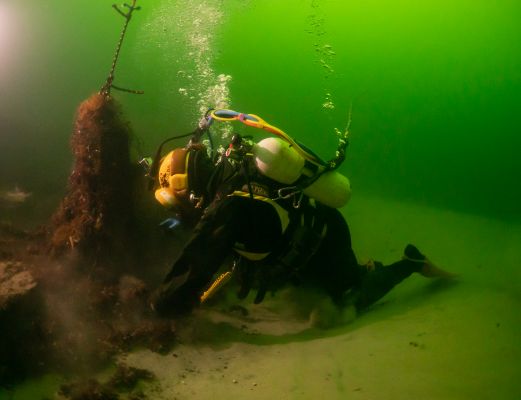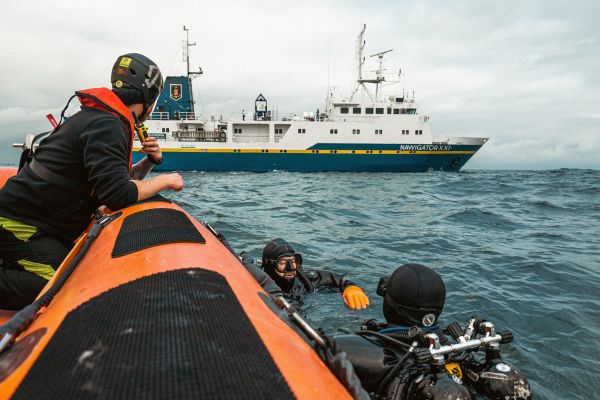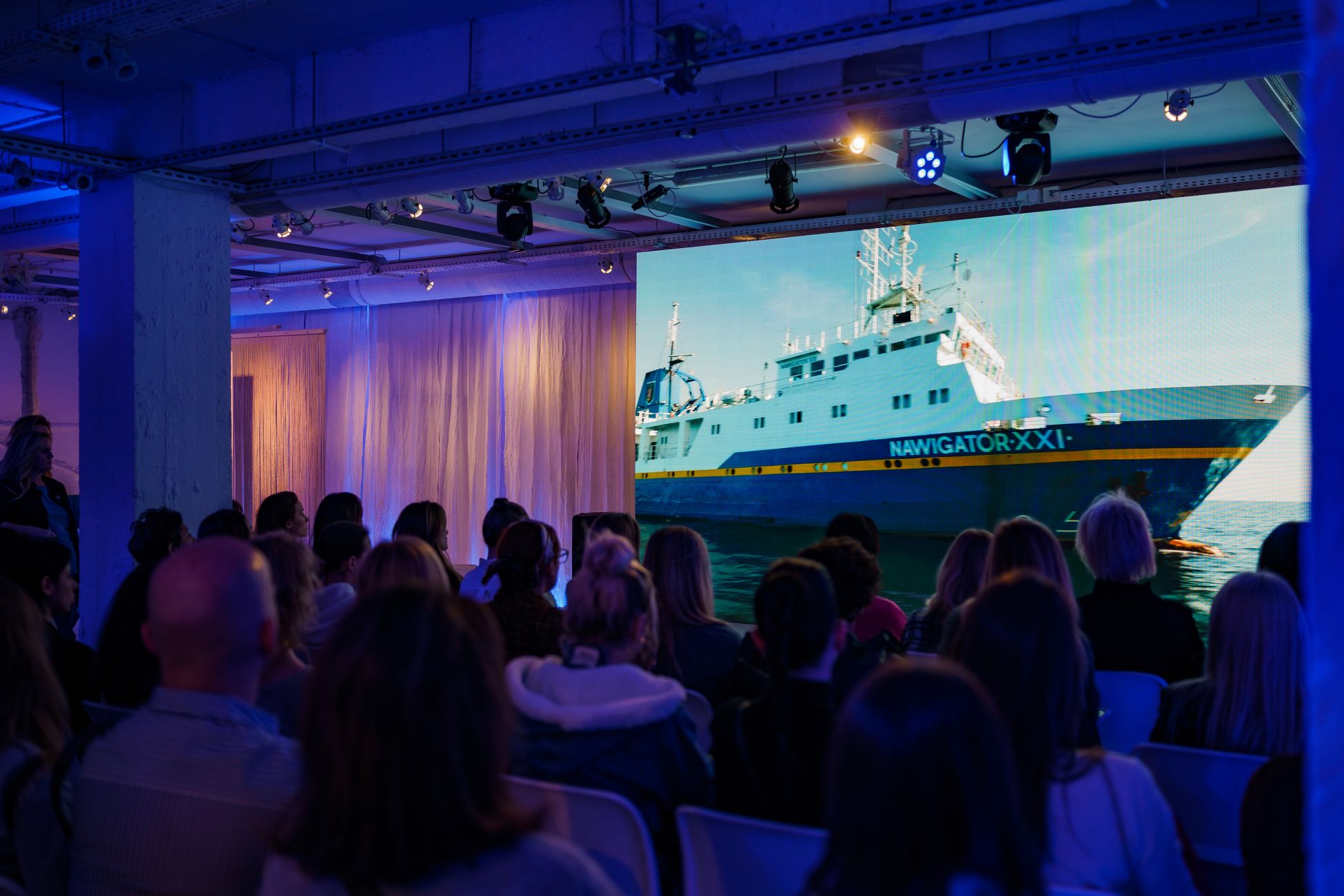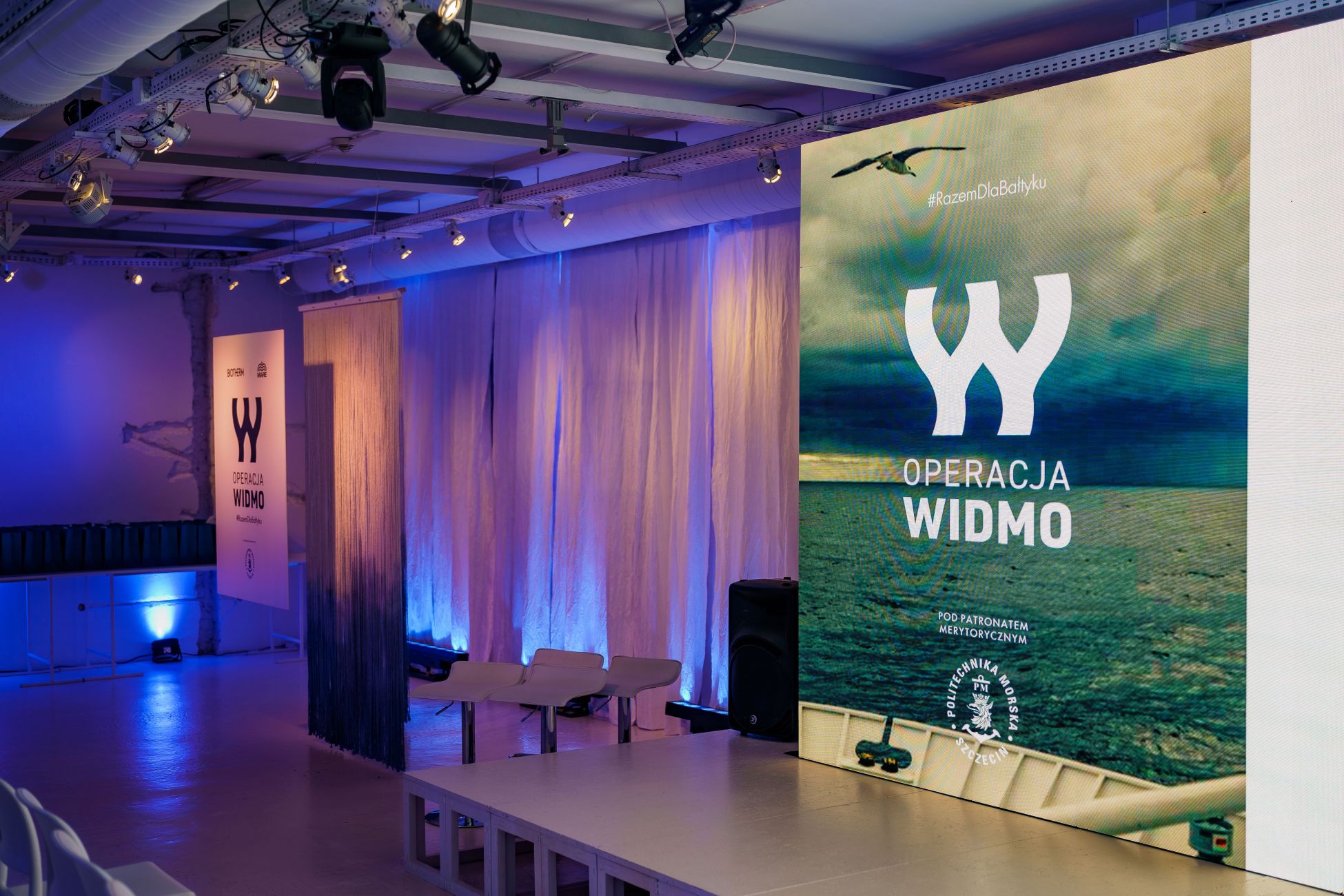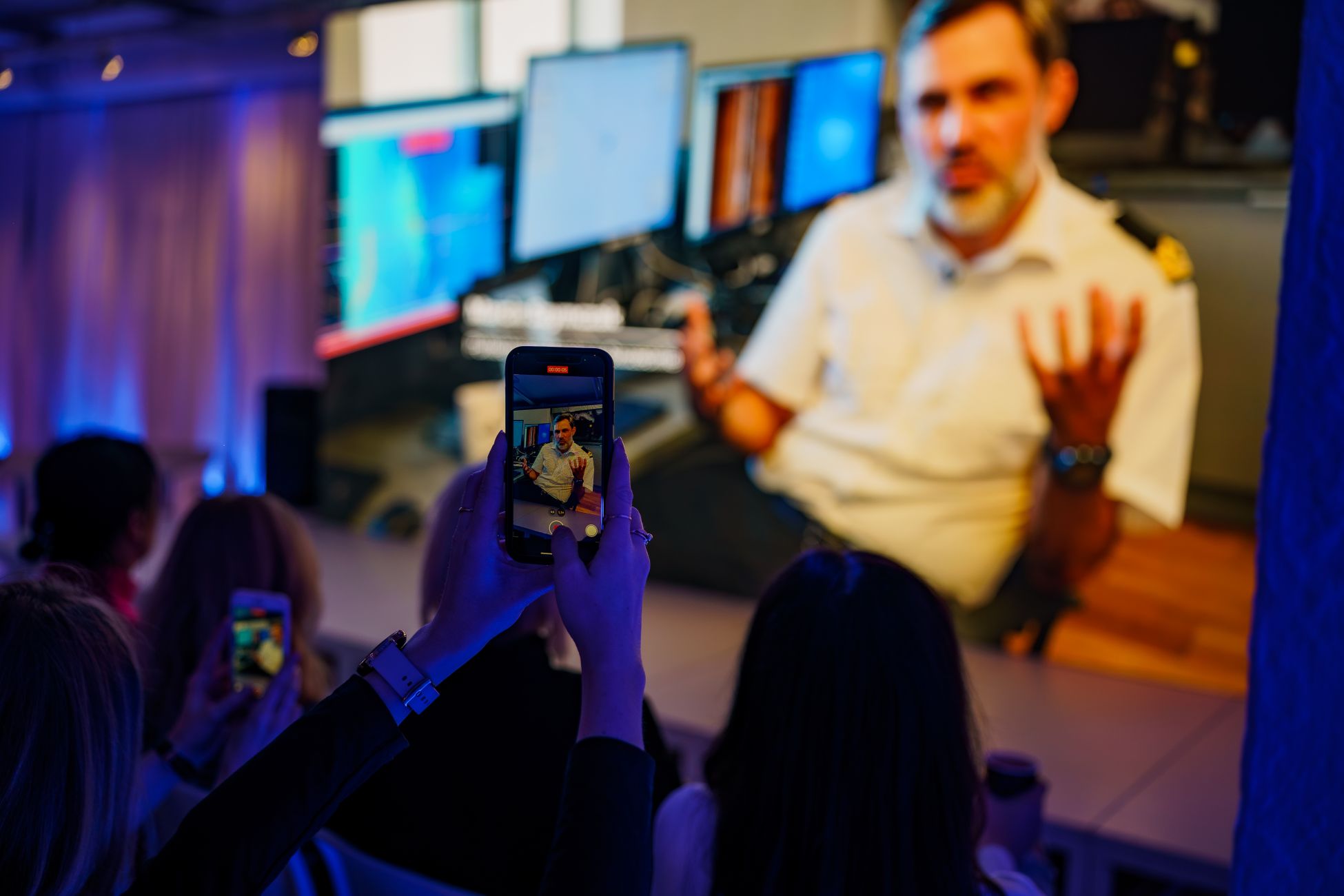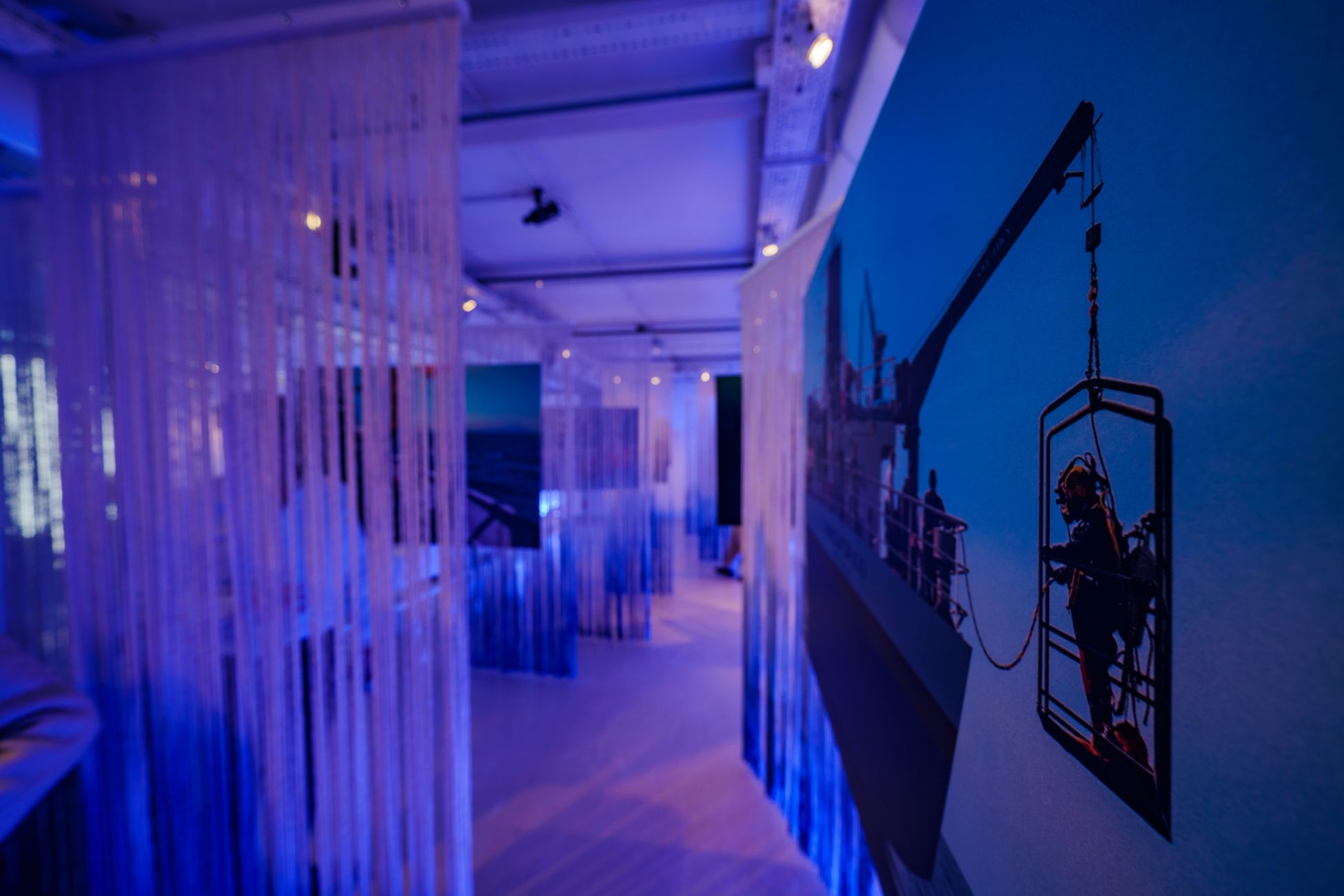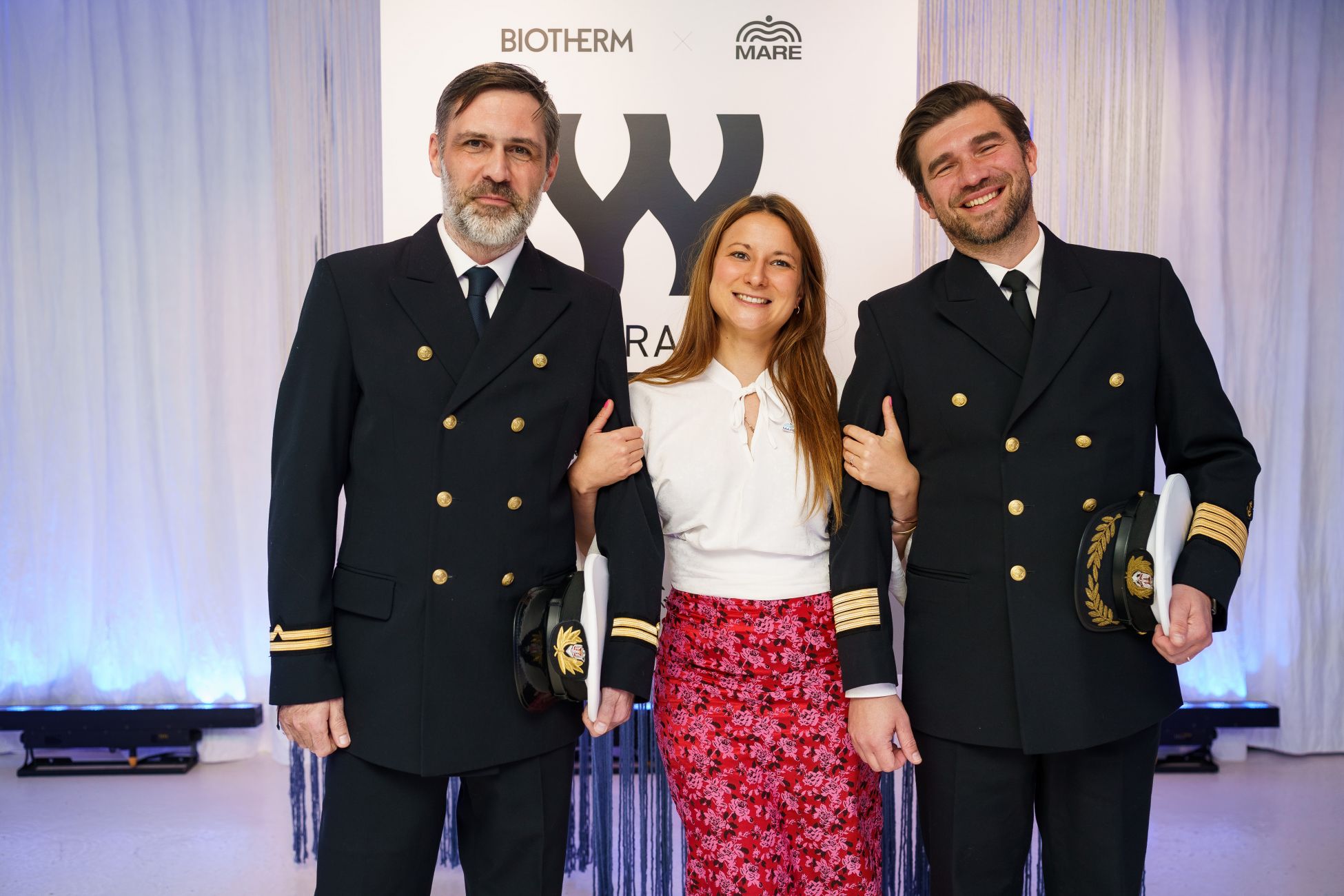OPERATION GHOST ? underwater action for the benefit of the Baltic ecosystem
The latest study published in October 2022 indicates that approximately 78 thousand km2 of various types of fishing gears posing a threat to marine ecosystems enter the seas and oceans every year. The so-called ghost nets are derelict fishing gears. They are one of the main sources of plastic pollution in the seas and oceans. They are deadly traps for fish, birds and marine mammals. The main goal of the Operation Ghost, a joint project of the MARE Foundation and the Biotherm brand, carried out under the auspices of the Maritime University in Szczecin is to contribute to solving the problem on a local scale, in the Baltic. as a result of this action 2,400 m2 of static nets made of nylon and potentially dangerous for the marine ecosystem were removed from the sea.
"OPERATION GHOST" w reżyserii Krystiana Bielatowicza
Tuesday, 13th June, 18:36 hours. We quickly cross the Chrobry Embankments in Szczecin. We can already see the Nawigator XXI, the ship we will spend the next few days. At 19:00 the ship goes to the sea. Another step in the Operation Ghost has started. Our goal is to clean selected Baltic wrecks from derelict fishing gears, the so-called ghost nets. This is the second out of the planned three trips in the framework of the project. The crew, scientists, students of the Maritime University, professional divers, representatives of the MARE Foundation and Biotherm are together onboard, ready for action.
- Ghost nets pose a threat for the ecosystem and hinder the monitoring of the wrecks. They are an important source of plastic pollution of the seas and oceans, and often become deadly traps for marine organisms. The continue to fish in an uncontrolled way. Most nets are made of plastic. Plastics does not decompose in the environment, but it breaks into smaller and smaller particles, called microplastics, and remains in the environment forever. – explains Olga Sarna from MARE Foundation.
- Plastic pollution has become one of the most pressing environmental issues. We are aware that microplastics are found in the human blood and lungs. When I had earned that ghost nets account for as much as 46% of the Great Pacific garbage patch, I decided to make every effort to ensure that Biotherm, the brand that I represent, joins actively in the fight against this huge problem. The DNA of the Biotherm brand includes the protection of the seas and oceans. Since 2012, with the establishment of the global Waterlovers programme, through cooperation with public benefit organisations, we support activities aimed at protecting marine ecosystems. Our goal was to start such activities at local level, in Poland, for the benefit of the Baltic Sea. That is how the Operation Ghost, a local project, has been initiated with the aim to draw public attention to the problem of ghost nets. – says Adrianna Wisińska, who represents Biotherm.
International organisations, including the Food and Agriculture Organisation of the United Nations (FAO), the International Maritime Organisation, as well as the United nations Environmental Programme have developed a range of hard and soft law measures to prevent gear loss and mitigate the impact of derelict fishing gears. These measures include marking and tracking, reporting and recovery of derelict gears, as well as improvement of port reception facilities for end of life gears.
Despite continuous efforts to solve the problem, fishing gears are still lost due to uncontrolled random events, such as storms, snags or when run over by vessels. It is extremely difficult to quantify derelict fishing nets. According to the latest research on ghost nets published in Science Advances in October 2022[1], approximately 78 thousand km2 of different types of fishing nets and more than 25 million traps are lost to the seas and oceans annually, on a global scale. Scientists agree that updated global ghost net estimates are needed that reflect the current state of global fisheries and inform targeted solutions at scale. Ghost nets need to be quantified using metres or kilometres, reflecting potential range and fishing capacity of a given gear. Just giving the weight of derelict fishing gears is not adequate and does not take into account the material they are made of.
- Fishing nets very often cumulate on different underwater snags, such as wrecks, which can also be a threat to the environment. Removing the nets from wrecks is the first necessary step to enable proper monitoring of wrecks for leaks of hazardous substances and further research to assess the risk they pose. – says Arkadiusz Tomczak, vice-rector of the Maritime University in Szczecin and chief hydrographer during Operation Ghost.
Three trips on research and training ship of the Maritime University in Szczecin, Nawigator XXI, took place in the framework of Operation Ghost. The purpose of the first trip, which had taken place in October 2021 was to confirm precise location of wrecks identified for removing derelict fishing gears. During the next trip in June 2022, professional divers removed ghost nets from four wrecks. During the research hydrographic data was collected using a multibeam sonar and a side sonar. The last trip took place in August 2022. Research and cleaning was conducted on another four wrecks located in the Słupsk Bank.
In total, during Operation Ghost, eight wrecks were examined and cleaned. These wrecks are located at depths up to 30 metres. Approximately 2.400 m2 of nylon lost fishing gears were removed. These were mainly set nets or entangling nets, potentially the most dangerous for the ecosystem, as well as part of a bottom trawl, weighing 30 kg.
One of the main conclusion of the project is the need to examine the wrecks located at greater depths for ghost nets, in order to verify the information on the main locations of derelict fishing gears. - says Olga Sarna from the MARE Foundation. – According to the data obtained from the Hydrographic Office of the Polish Navy the exact locations of 415 wrecks in the Polish waters are known. Many wrecks have not yet been discovered.
Photo report from the press conference with the screening of the documentary Operation Ghost:
Fot. Bartek Dębkowski
_________________________________________________________
BIOTHERM’s commitment
The partnership with the MARE Foundation is the result of Biotherm’s new sustainability campaign announced in 2021, called ”Live by Blue Beauty”.
Biotherm is one of the first global beauty brands to commit to ocean and marine protection under “Blue Beauty”. Such approach refers to the entire chain, from sourcing natural, renewable ingredients to creating formula and packaging that respect marine ecosystems, to minimise their impact on the environment and marine ecosystems. Biotherm’s initiatives with respect to environmental protection date back to 2012, when the global programme called Water Lovers was launched with the mission of creating a better future for the oceans and the seas. The brand has long-term experience in cooperating with such non-governmental organisations as Sylvia Earle Alliance (Mission Blue), Tara Ocean Foundation, Surfrider Foundation or the Oceanography Institute of Prince Albert Foundation in Monaco. The MARE Foundation is another partner at local level, in Poland, which will enable the brand to have direct impact on improving the Baltic Sea ecosystem.
The MARE Foundation
The MARE Foundation the only non-governmental organisation in Poland focused on the protection of the Baltic ecosystem. The activities are focused on marine litter (including plastics and ghost nets), and management of dangerous shipwrecks (we aim at implementing a wreck management plan in Poland), as well as education of the society.
Source: press release



